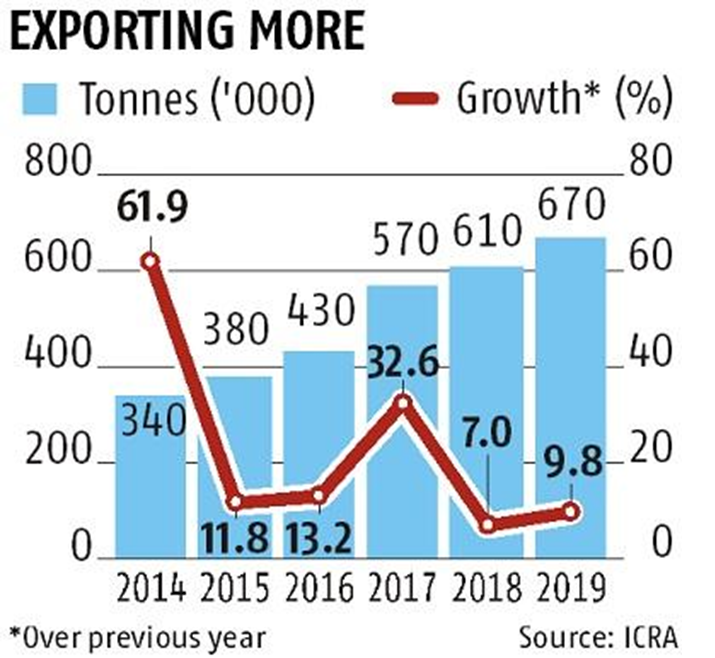.jpg)
“China mainly imports large batches of frozen shrimp and low value-added shrimp products from India. Companies that depend on the Chinese market immediately feel the state of demand declining. Small-sized companies with limited financial flexibility will be hardest hit. The broad-reaching impact on India comes not only from weak Chinese demand but also from a price adjustment caused by supply-demand movement in the world market, ”said Pavethra Ponniah, ICRA vice president for or.
 |
For China, the main sources of frozen shrimp imports are Ecuador (50.7% in the first 11 months of 2019), India (24%), and Vietnam + Thailand (a total of 9.6%). 60% of China's total annual shrimp imports are concentrated in the July-December period to meet growing demand in December and January each year, before a cyclical decrease in February is the paragraph after Tet holiday. The peak period of consumer consumption in China was recently interrupted by the blockade of cities after the corona virus spread rapidly throughout China.
China, together with Vietnam, accounts for nearly 25% of India's total annual seafood export. “The unprecedented large-scale closure in China has led to a decline in people's demand for seafood, resulting in an oversupply in the world market. In addition to reducing demand and disruption of China's domestic logistics activities, from unloading, warehousing to deep processing are broken, the impact of this disruption is evident throughout the value chain. Clearance for seafood containers at ports in China is difficult in the current environment, temporarily blocking the entire supply chain, ”said Ponniah.
Global shrimp prices are expected to face downward pressure in the next few months as trade has to adjust to demand demand in China. China's domestic shrimp production is estimated at over 1 million tons and the large consumption scale makes the country a decisive factor in global shrimp prices. In fact, in 2019, China plays a role as a market stabilizer when demand for shrimp from the US, EU and Japan all weakens.
In terms of international trade, the United States remains the largest shrimp importer in the world, with imports of 698,000 tons in 2019. China followed closely at No. 2 with 650,000 tons, despite the fact that China is a country. Largest shrimp producer in the world. In the second half of 2019, China overtook the United States to become the largest shrimp importer globally, with increased domestic consumption, outstripping domestic shrimp production that is suffering from the disease.
The EU, Japan and Vietnam are other major shrimp importing countries. The EU and Japan have had flat shrimp imports over the past five years, while Vietnam's shrimp imports plummeted in 2019. Vietnam – essentially a re-exporter than a consumer market – is The largest non-quota shrimp supply to China until 2019. With China suppressing quota imports through Vietnam, shrimp exports from India to China will soar in 2020. “Indian companies that have closed year-to-year fixed price contracts will not be affected immediately. However, the profit margins of companies selling at spot prices will be impacted quickly, ”said an industry expert.
Considering the production time of 3-4 months per cycle, the short-term supply of shrimp is inelastic. However, the level of stocking in Indian shrimp farms has decreased in the peak farming season in February, so the supply may decrease in the coming months.
According to Business Standard
